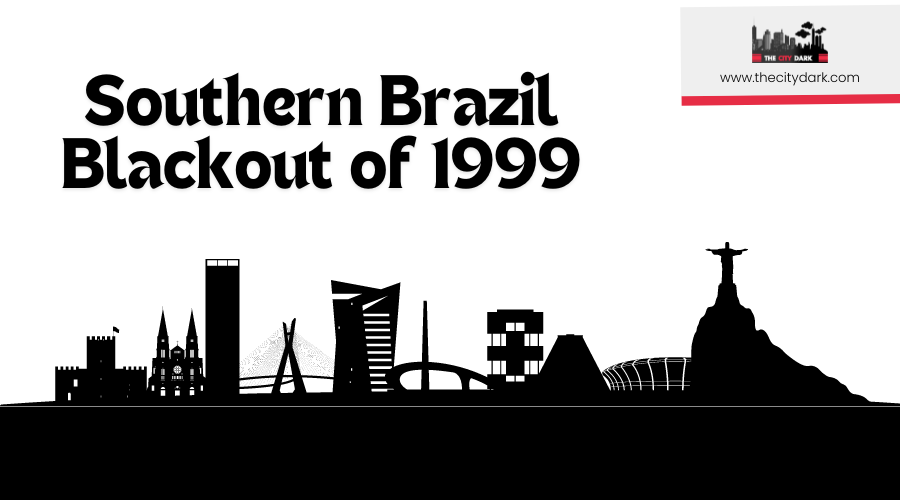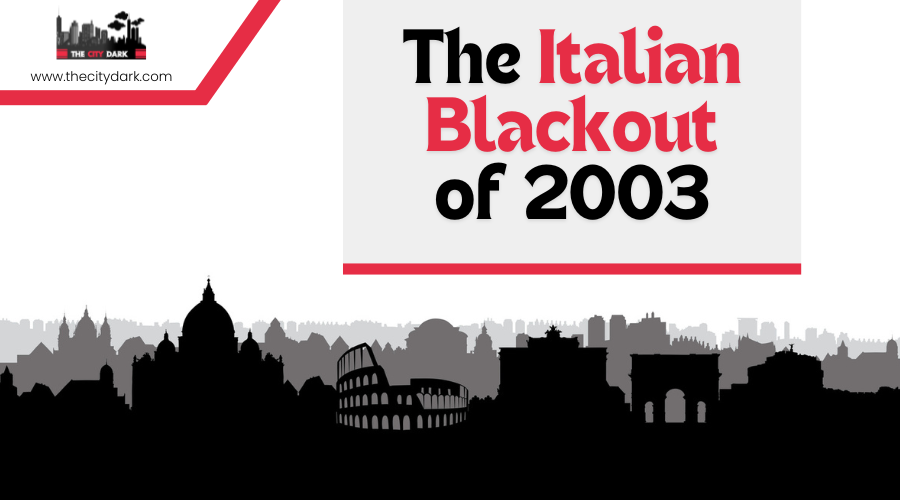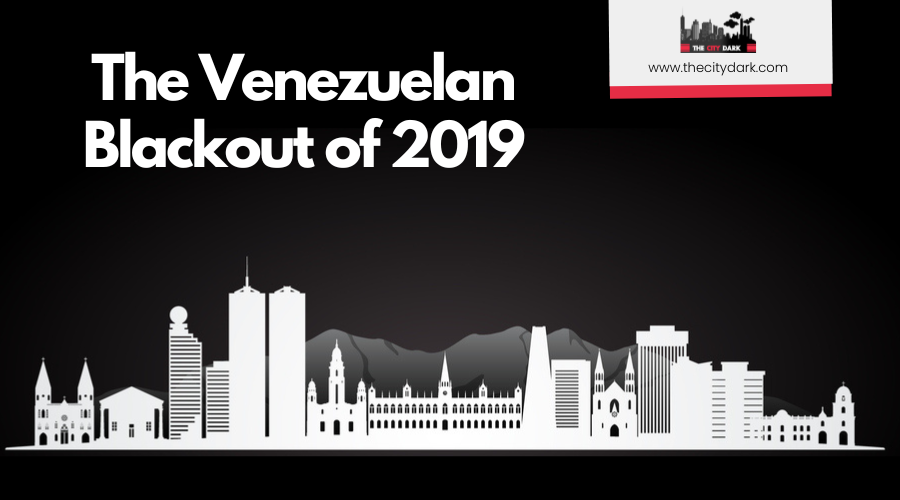Southern Brazil Blackout of 1999

Imagine you're heading home after a long day, and suddenly, everything goes dark. That's exactly what happened to millions across Southern Brazil in 1999. A massive blackout, triggered by a lightning strike at the Bauru substation, plunged major cities like São Paulo and Rio de Janeiro into chaos. The power outages disrupted public transportation, halted emergency services, and exposed critical flaws in the country's power infrastructure. This event underscored the immediate need for better maintenance and sparked urgent debates on energy policy reform. So, what exactly went wrong, and how did Brazil respond?
Overview
The Southern Brazil Blackout of 1999, triggered by a single lightning strike on March 11, escalated into a massive power outage affecting approximately 75 to 97 million people in major cities like São Paulo and Rio de Janeiro. The lightning strike hit the Bauru substation, causing the tripping of 440kV circuits and subsequent generator shutdowns, leading to an immediate and widespread power loss.
The blackout had far-reaching consequences, disrupting public transportation, emergency services, and daily activities. It exposed significant vulnerabilities in Brazil's power infrastructure, which were exacerbated by an ongoing investment crisis. The event underscored the urgent need for better maintenance and expansion of the power grid.
Efforts to restore power began shortly after midnight on March 12, but the process was slow and challenging. Ensuring public safety and maintaining order during the blackout were significant concerns. This unprecedented event, the largest blackout in history at the time, sparked serious discussions about Brazil's energy policy and the critical need for infrastructure improvements.
Causes
The Southern Brazil Blackout of 1999 was primarily triggered by a lightning strike at the Bauru substation, leading to a cascading failure in the power grid. Brazil's investment crisis at the time resulted in inadequate maintenance and expansion of electrical infrastructure. This neglect, combined with overloaded transmission lines from the Itaipu power plant, set the stage for the widespread power failure.
Lightning Strike Incident

On March 11, 1999, a lightning strike at the Bauru substation in São Paulo triggered the Southern Brazil blackout. The lightning strike caused the tripping of 440kV circuits, disrupting the normal flow of electricity and initiating a series of automatic generator shutdowns. The grid's lack of sufficient alternative power routes exacerbated the situation, leading to a rapid escalation.
| Cause | Immediate Effect | Broader Impact |
|---|---|---|
| Lightning Strike | Tripping of 440kV circuits | Grid instability |
| Generator Shutdown | Power outage | Widespread blackout |
| Overloaded Lines | Transmission failures | Severe power imbalances |
The Itaipu power plant, one of the largest in the world, struggled to manage the load due to overloaded transmission lines, worsening the situation. This led to overfrequency issues in South São Paulo due to excess generation, while other regions faced underfrequency problems due to inadequate generation.
This incident highlighted the fragility of the power grid. The shutdown of generators and overloaded transmission lines, coupled with the lack of robust alternative pathways, made the blackout inevitable. It underscores the importance of a resilient power grid to prevent cascading failures and ensure reliable electricity supply.
Infrastructure Investment Crisis
The Southern Brazil Blackout of 1999 starkly revealed the consequences of an infrastructure investment crisis affecting the nation's power grid. Leading up to the blackout, Brazil faced an economic downturn in the late 1990s, prompting government spending cuts that severely hindered the upgrade and maintenance of critical electrical infrastructure. Consequently, vital maintenance and expansion of the power grid were neglected.

The power grid's inability to support alternative power routes severely complicated restoration efforts during the blackout. Automatic shutdowns of generators resulted directly from this lack of investment. The Itaipu power plant, a major electricity source for Southern Brazil, couldn't handle the excessive load due to overloaded and poorly maintained transmission lines.
These deficiencies highlighted the urgent need for increased investment in the energy sector. Without proper funding for infrastructure and maintenance, the power grid's reliability was compromised. Moving forward, robust investment in grid infrastructure is crucial to prevent future outages and ensure a stable electricity supply.
Impact on Infrastructure
The blackout in Southern Brazil in March 1999 threw the region's infrastructure into disarray, revealing critical vulnerabilities. The widespread power outages severely impacted public transportation, stranding over 60,000 passengers in Rio de Janeiro's subway system. This incident underscored the fragility of the area's energy infrastructure, which struggled to manage the sudden demand for restoration efforts.
In response to the chaos, authorities took decisive measures to maintain order. In Rio de Janeiro, 1,200 military police personnel were deployed to prevent looting and ensure public safety. Meanwhile, São Paulo's traffic authorities closed city tunnels to deter potential robberies, highlighting the strain on urban infrastructure during the blackout.
Restoration of power began at midnight, but the gradual recovery process revealed significant challenges in managing the infrastructure's resilience. The blackout exposed critical weaknesses in Brazil's power grid, sparking urgent discussions about the need for improved maintenance and expansion of energy infrastructure to prevent future disruptions.
This event served as a wake-up call for the region, emphasizing the importance of robust and reliable infrastructure to maintain public safety and economic stability during crises.
Technical Details
Amid the chaos that disrupted urban life and strained public services, it is crucial to understand the technical aspects that led to the Southern Brazil Blackout of 1999. The blackout began with a lightning strike that caused the tripping of 440kV circuits at the Bauru substation in São Paulo. This incident exposed critical vulnerabilities in the power transmission infrastructure, notably as the Itaipu power plant struggled to support the load due to overloaded transmission lines.
In the southern São Paulo region, an overfrequency problem arose from excess generation, while underfrequency affected the rest of the system due to insufficient generation capacity. The automatic rejection of 35% of the sub-system load exacerbated the underfrequency issue, leading to further generator tripping and system fragmentation. The blackout resulted from a cascade of failures across the interconnected power grid.
The impact was significant, affecting a large portion of Brazil's power grid and underscoring the urgent need for improved maintenance and investment in energy infrastructure. By understanding these technical failures, one can appreciate the complexity and fragility of the power systems that modern life depends on, highlighting the importance of robust infrastructure to prevent such widespread disruptions.
Government Response

You likely remember the chaos and confusion during the Southern Brazil blackout of 1999. The Brazilian government faced significant criticism for its slow communication. However, emergency services were activated quickly to restore power, and authorities issued public safety advisories. They relied on radio and television to keep the public informed amidst disrupted networks.
Emergency Services Activation
The rapid activation of emergency services during the Southern Brazil Blackout of 1999 demonstrated the government's commitment to restoring normalcy and ensuring public safety. As the blackout unfolded, emergency services were swiftly mobilized, with utility company technicians dispatched to address power restoration efforts. They worked tirelessly to restore electricity, understanding that every minute without power posed a significant risk to public safety.
Local authorities implemented crisis management protocols without delay, ensuring effective deployment of emergency services to assist those affected. Although the government faced criticism for inadequate communication during the outage, their crisis management strategies helped mitigate the blackout's impact. Public safety advisories were issued, urging residents to stay indoors and remain vigilant due to increased crime rates during the power outage.
Information about power restoration and necessary safety measures was disseminated through radio and television broadcasts, keeping the public informed and alleviating some of the anxiety caused by the blackout. Through coordinated efforts and swift action, emergency services played a pivotal role in navigating the crisis and working towards restoring normalcy in Southern Brazil.
Communication and Public Safety
During the Southern Brazil Blackout of 1999, the government's response to communication and public safety faced significant challenges. Many criticized officials for their lack of timely communication, which left residents unaware of the situation and necessary safety measures. Despite these initial hurdles, emergency services were mobilized swiftly. Technicians from utility companies were dispatched to restore power as rapidly as possible.
Public safety advisories encouraged residents to stay indoors and remain calm. Local authorities activated crisis management protocols to coordinate response efforts effectively. Information dissemination was primarily conducted through radio and television, ensuring that residents received updates on restoration efforts and safety guidelines.
| Communication Methods | Public Safety Advisories | Emergency Services |
|---|---|---|
| Radio | Stay Indoors | Rapid Mobilization |
| Television | Remain Calm | Technician Dispatch |
| Local Authorities | Crisis Management | Police Presence |
| Protocols | ||
| Improved Police Presence |
In response to increased crime rates during the blackout, authorities enhanced police presence in affected areas to maintain public order and safety. While the initial response faced criticism, the subsequent efforts to manage communication and public safety were crucial in handling the crisis effectively.
Infrastructure Review and Improvements
Addressing communication and public safety laid the groundwork for a broader examination of the power grid. Following the Southern Brazil Blackout of 1999, the government initiated a comprehensive review of the power grid infrastructure, uncovering significant vulnerabilities that required immediate action. Recognizing the critical need for modernization, discussions quickly shifted to increasing investments in both the maintenance and expansion of the power grid. Efforts focused on preventing similar incidents by enhancing reliability and system resilience.
Authorities emphasized the importance of developing alternative power routes to reduce dependency on single transmission lines. This strategy aimed to ensure that any future disruptions would not escalate into widespread blackouts. Stricter regulations and new emergency protocols were established for utility companies, significantly improving response times during outages. This proactive approach was essential for maintaining public trust and safety.
Post-blackout investigations recommended the implementation of advanced technology for grid monitoring and management. These innovations would not only boost reliability but also enhance the efficiency of the entire system. By integrating modern technological solutions, the power grid could better meet the demands of a rapidly growing population and evolving energy needs. The government's response was clear: infrastructure modernization was now a top priority.
Emergency Measures
During the Southern Brazil blackout of 1999, authorities swiftly implemented emergency measures to ensure public safety. In Rio de Janeiro, the military police deployed 1,200 officers to maintain order and prevent looting, patrolling the streets to prevent chaos from escalating. In São Paulo, traffic authorities closed city tunnels to deter potential robberies and protect the public during the outage.
Emergency services were mobilized across affected areas. Hospitals, critical to public safety, operated on backup power sources to continue their services. Ambulances and medical teams were on high alert, ready to assist those in need.
Local authorities issued public safety advisories, urging citizens to stay indoors until power was fully restored. This proactive measure helped mitigate risks and kept the public calm. Information about the blackout and restoration efforts was disseminated through radio and television, ensuring everyone stayed informed.
Long-Term Consequences
The immediate response to the Southern Brazil blackout of 1999 aimed to maintain public order and safety, but the event's impact extended far beyond those initial measures. The blackout revealed significant vulnerabilities in Brazil's energy infrastructure, leading to increased public scrutiny and demands for accountability from both the government and energy companies.
The economic impact was immediate and severe, with many businesses suffering substantial losses. This spurred urgent discussions about investing in robust backup systems and enhancing grid resilience to prevent future disruptions. The blackout also highlighted Brazil's heavy reliance on hydroelectric power, emphasizing the need to diversify energy sources to mitigate risks.
As a long-term consequence, the event stimulated the development of new regulations and protocols aimed at improving communication and coordination during energy crises, ensuring a more reliable and secure power supply. The 1999 blackout thus became a pivotal moment, driving critical changes in how Brazil manages its energy infrastructure and prepares for future challenges.
Lessons Learned
The Southern Brazil Blackout of 1999 highlighted several critical lessons. Firstly, the crisis underscored the essential need for regular maintenance and investment in power infrastructure. Financial constraints had left the grid vulnerable, demonstrating that neglecting infrastructure can lead to catastrophic failures.
Additionally, the importance of diversifying energy sources and enhancing transmission line redundancy became evident. The blackout showed that over-reliance on a single power plant, such as Itaipu, creates a single point of failure. Diversifying energy sources and improving redundancy can mitigate the risk of cascading failures when circuits are overloaded.
The event also revealed significant gaps in crisis management, particularly in emergency response protocols, communication, and coordination. Addressing these gaps ensures a more effective response to future incidents, thereby minimizing the impact on public safety.
Furthermore, the blackout prompted a re-evaluation of energy policy, emphasizing the need for reform to increase scrutiny and modernize the power grid. Such reforms enhance reliability and resilience, reducing the likelihood of similar blackouts in the future.
Global Context

Examining the Southern Brazil Blackout of 1999 within a global context highlights the interconnected vulnerabilities of power grids worldwide. Triggered by a lightning strike at a substation in Bauru, São Paulo, the blackout led to an extensive power failure, affecting 97 million people. This incident exposed critical weaknesses in Brazil's electrical infrastructure and initiated urgent discussions on energy policy reform.
Globally, the Southern Brazil blackout served as a stark reminder of the fragility of modern power grids, influencing energy strategies in numerous countries. It underscored three essential points:
- Investment in Infrastructure: The blackout revealed the severe consequences of inadequate investment in electrical infrastructure, emphasizing the need for consistent maintenance and expansion.
- Resilience and Redundancy: The cascading failure demonstrated that overloaded transmission lines and a lack of redundancy can result in widespread power outages, impacting millions.
- Policy Reform: It ignited global discussions on energy policy reform, advocating for robust regulations to ensure grid reliability and prevent future blackouts.




